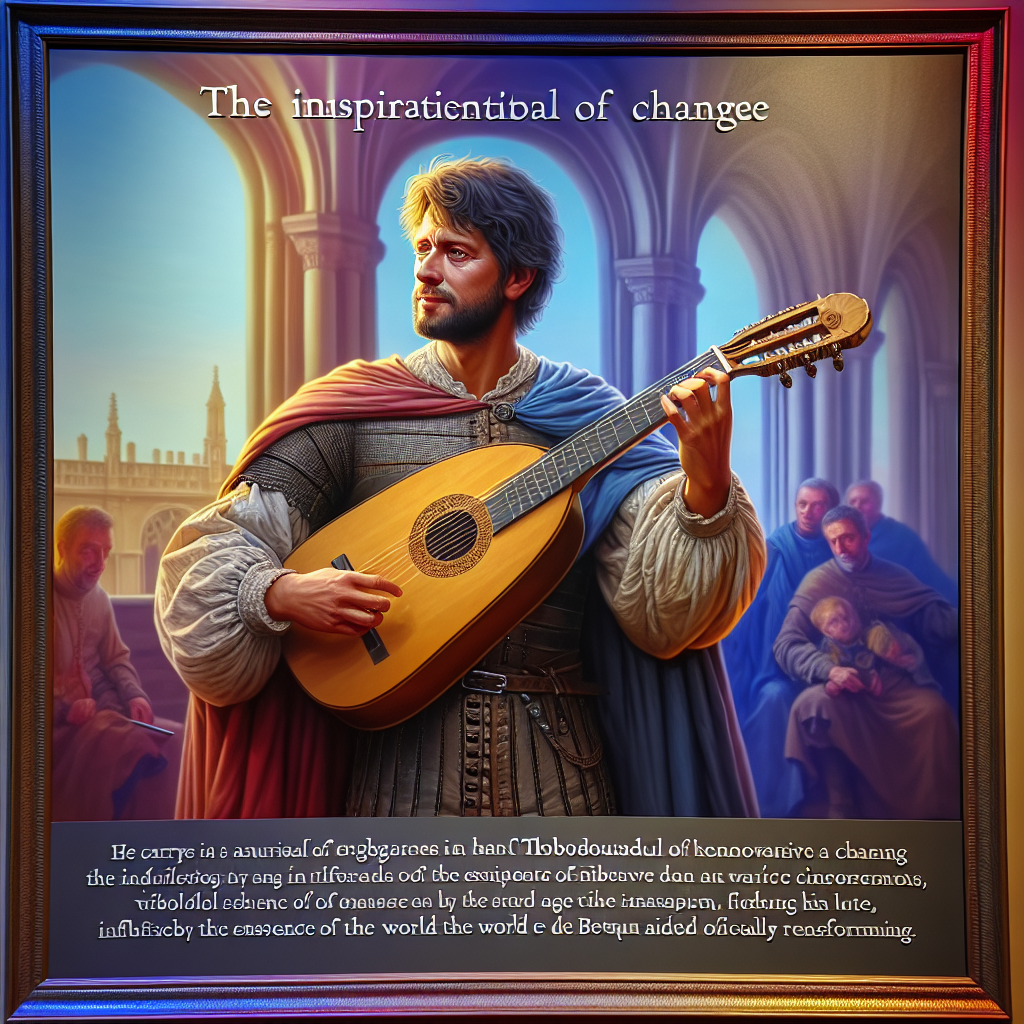In the realm where medieval melodies meet poetic prowess, Raimon Vidal de Bezaudun emerges as a beacon of artistic enlightenment. Who was this captivating figure? He was a renowned troubadour, delightfully strumming his way through the 13th-century Occitania (modern-day Southern France). His life, shrouded partly in mystery, offers glimpses into the vibrant cultural exchanges of his time. He composed music and poetry that captured the vibrant essence of the courtly love tradition, a thematic anchor floating through the tapestry of medieval European culture. To understand why Vidal's work is significant, we must peel back the layers of historical and artistic context surrounding his creations.
The Troubadour Tradition: An Overview
Before we plunge deeper, it's essential to understand the world of the troubadours. These were poet-musicians who thrived in the medieval courts of Southern France between the 11th and 13th centuries. They are celebrated for their innovation in poetic structure and themes, especially those concerning courtly love—think unrequited love, noble deeds, and the bittersweet nature of such pursuits. Raimon Vidal belonged to this illustrious tradition and contributed significantly to its reach and popularity.
What Sets Raimon Vidal Apart?
Raimon Vidal's talent shone brightly not just in his compositions but also in his ability to be a keen observer and commentator of his time. His most reputed work, "Razo de trobar", is a seminal treatise that offers essential insights into the art of composing troubadour poetry. Written around 1210, it is one of the earliest known texts to systematically discuss grammatical, stylistic, and thematic elements of Occitan poetry.
Unlike many of his contemporaries, who's biographical details often remain wisps lost to history, Raimon Vidal distinguished himself through his didactic spirit—a passion for teaching and sharing knowledge. His "Razo de trobar" is much like an intimate conversation with an enthusiastic mentor, breaking down the complexities of poetic creation into digestible wisdom.
The Geographical and Cultural Heartbeat
Imagine Occitania during Raimon Vidal’s time—a melting pot of cultures alongside the bustling trade routes of the Mediterranean. This region was an incubator for progressive thought during the High Middle Ages. The courts were buzzing with ideas exchanged through debates, artistry, and multicultural dialogues. Raimon Vidal was not only a participant in this cultural flourishing but also a curator.
His poetry often reflects the diverse influences swirling through Occitan society. The mix of Christian, Islamic, and Jewish philosophies created a fertile ground for philosophical exploration, which Vidal masterfully wove into his work.
The Science of Poetry: "Razo de trobar"
While Raimon Vidal was a poet, his work bore the hallmark of a meticulous scientist when it came to crafting verse. "Razo de trobar" isn't just poetry for the sake of artistic expression but a scientific breakdown of how great poetry could be achieved and appreciated. Vidal explains the foundational structures of meter, rhyme, and mode, providing clear examples and advice on how to replicate the vivid imagery and emotive power of troubadour poetry.
His efforts were not just scholarly musings but aimed at creating a lineage of artistry, ensuring that future poets could access a robust framework to express their own observations and emotions.
The Lasting Legacy of Raimon Vidal
What makes Vidal's legacy so compelling today is his dual commitment to creation and education. While modern society moves with digital speed, his work remains a reminder of the importance of understanding the structure and cultural context behind any creation—be it music, literature, or visual art.
In examining Raimon Vidal de Bezaudun's influence, we unearth the joy of human expression and connection that transcends time. It is a testament to how art doesn't just survive but thrives when nurtured by curious and generous spirits. His works encouraged a tradition that went beyond mere entertainment, striving for an all-encompassing cultural awareness.
Raimon Vidal, A Beacon in the Arts
Raimon Vidal stands as a testament to what humanity can achieve through art and science. He is a luminous figure in a time where the convergence of diverse cultures and ideas paved a path not just for troubadours, but for our understanding of community and communication. His contributions extend beyond his lifetime, not merely as folklore of the past, but as living lessons for those who yearn for creativity and clarity.
In the stories and melodies woven by Raimon Vidal de Bezaudun, there lies an eternal truth: art is a bridge that connects ages, and understanding is forever within reach when fueled by the flames of curiosity and optimism.

